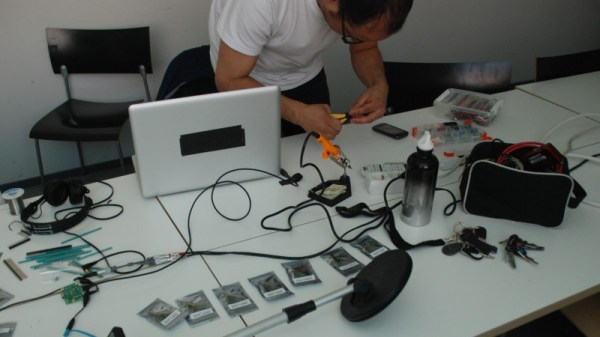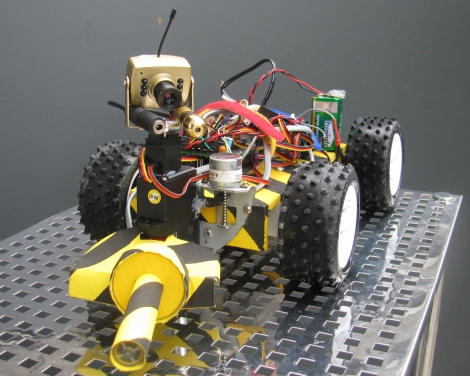Metal detecting is a fun pastime, even when all you can find is a little bit of peace and a whole lot of pop tabs. [Huygens Optics] has a VLF-based metal detector that offers much more feedback than just a beep or no beep. This thing is fancy enough to discriminate between types of metal and report back a numerical ID value from a corresponding range of conductivity.
 Most pop tabs rated an ID of 76 or 77, so [Huygens Optics] started ignoring these until the day he found a platinum wedding band without looking at the ID readout. Turns out, the ring registered in the throwaway range. Now thoroughly intrigued by the detector’s ID system, [Huygens Optics] set up a test rig with an oscilloscope to see for himself how the thing was telling different metals apart. His valuable and sweeping video walk-through is hiding after the break.
Most pop tabs rated an ID of 76 or 77, so [Huygens Optics] started ignoring these until the day he found a platinum wedding band without looking at the ID readout. Turns out, the ring registered in the throwaway range. Now thoroughly intrigued by the detector’s ID system, [Huygens Optics] set up a test rig with an oscilloscope to see for himself how the thing was telling different metals apart. His valuable and sweeping video walk-through is hiding after the break.
A Very Low-Frequency (VLF) detector uses two coils, one to emit and one to receive. They are overlapped just enough so that the reception coil can’t see the emission coil’s magnetic field. This frees up the reception coil’s magnetic field to be interrupted only by third-party metal, i.e. hidden treasures in the ground.
Once [Huygens Optics] determined which coil was which, he started passing metal objects near the reception coil to see what happened on the ‘scope. Depending on the material type and the size and shape of the object, the waveform it produced showed a shift in phase from the emission coil’s waveform. This is pretty much directly translated to the ID readout — the higher the phase shift value, the higher the ID value.
We’ve picked up DIY metal detectors of all sizes over the years, but this one is the ATtiny-ist.
Continue reading “Progressive Or Thrash? How Metal Detectors Discriminate”


















